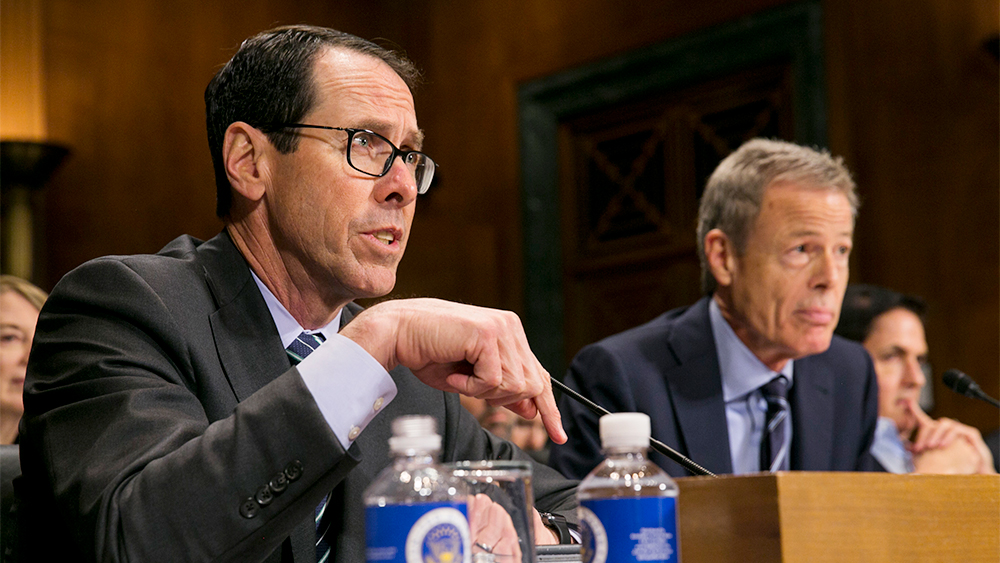AT&T Decision Could Send Content Companies Rushing Into Big Tech’s Arms
By Brian Steinberg
LOS ANGELES (Variety.com) – Companies in the media sector have eyed each other as merger partners for years, the necessary result of the rapid rise of nimble digital rivals like Netflix, YouTube and Amazon. Now they have reason to look to a new array of candidates.
A decision Tuesday by U.S. District Court Judge Richard Leon gave permission for and Time Warner to join in what is expected to be an $85.4 billion merger. But the move would also seem to offer tacit approval for a hard-to-breed strain of media-industry M&A.
For decades, as technology giants have gained more scale, content companies have hoped to rival them. That’s why Discovery Communications recently snatched up Scripps Networks, why Lionsgate and Starz merged their assets; and why Shari Redstone has pushed not once but twice for the two companies her family controls – CBS and Viacom – to join anew what her father, Sumner Redstone, split apart in 2006. Now, there’s a new path: marrying content with technology.
The AT&T merger suggests regulators won’t stand in the way of companies that want to combine producers of intellectual properties like the DC Comics superheroes, CNN news, Samantha Bee’s comedy and “Game of Thrones” with a company better able to distribute it through broadband and digital channels – and use data and targeting technology to wring more out of the process. The argument, of course, is that many other companies that do this very thing already exists, whether they be Google’s YouTube or Amazon’s Prime video service.
Already, AT&T has launched an advertising and analytics unit led by Brian Lesser, formerly the chief executive of the North American operations of WPP’s large GroupM consortium of media-buying agencies.. Lesser reports directly to AT&T Chairman and Chief Executive Randall Stephenson, and is charged with building and leading “an advertising and analytics business using the company’s unique customer data and growing content assets.” In the past, Stephenson has articulated a strategy to “build an automated advertising platform that can do for premium video and TV advertising what the search and social media companies have done for digital advertising.”
To be sure, the idea of mixing content and distribution has been tried before. Comcast took over a controlling interest in NBCUniversal from General Electric in 2011 for cash and assets valued at $13.75 billion (and then bought the rest of the company in 2013). But there have been limits. When Comcast tried to expand its influence with a purchase of Time Warner Cable, the Department of Justice balked, and the Philadelphia cable giant backed down.
Would it have to do so today? The approval for AT&T suggests that these marriages of technology and content might have a new chance. After all, given a clear consumer desire for so-called “skinny bundles,” eroding linear-TV viewership and softer advertiser demand for cable, it’s clear more companies involved with the creation or distribution of content need greater scale.
There are many potential candidates. Might Charter Communications want to add content assets to its distribution power, which was widened by its acquisition of Time Warner Cable in May 2016 for approximately $65 billion? Might Verizon want to add other types of content to its ranks after it formed its Oath unit out of its acquisitions of AOL and Yahoo (the company’s recent decision to name a technology-focused executive as CEO suggests that it sees its future more strongly in other lines of business). Comcast, which is likely to make a rival bid for the 21st Century Fox assets slated to be sold to Walt Disney Co., has made no secret of its growing desire for more scale.
And then there are the content players, many of whom seem smaller every time a new merger involving the tech giants takes place. Despite its recent purchase of Scripps, Discovery Inc. could make sense for a distributor – or it could be rolled up with other companies that are controlled to various degrees by media executive John Malone, who has stakes in both Lionsgate and Discovery. Many analysts see both and as too small to exist independently for much longer. Could they rethink a merger or seek an end game elsewhere? AMC Networks, which distributes “The Walking Dead” and “Better Call Saul,” could also help the aims of a larger player.
The Comcast-NBCU tie-up seems to prove the value of getting bigger. Since buying that minority stake in NBCU from General Electric, Comcast has become an impossible-to-ignore presence. It now controls a bevy of must-see properties, including U.S. broadcasts of the Olympics; “Sunday Night Football”; and “This Is Us.” It has extended its reach into the world of sports rights and kids’ programming. In TV’s 2017 upfront” marketplace for advance advertising sales, the company secured a little under $6.5 billion in ad commitments, compared with around $6 billion in 2016.

